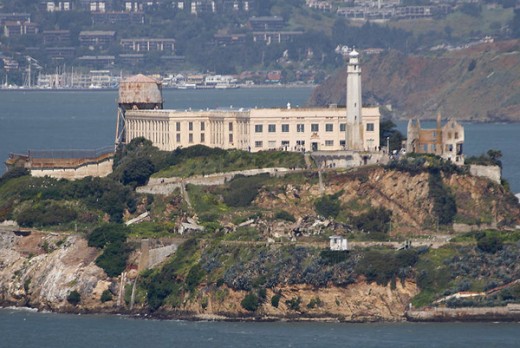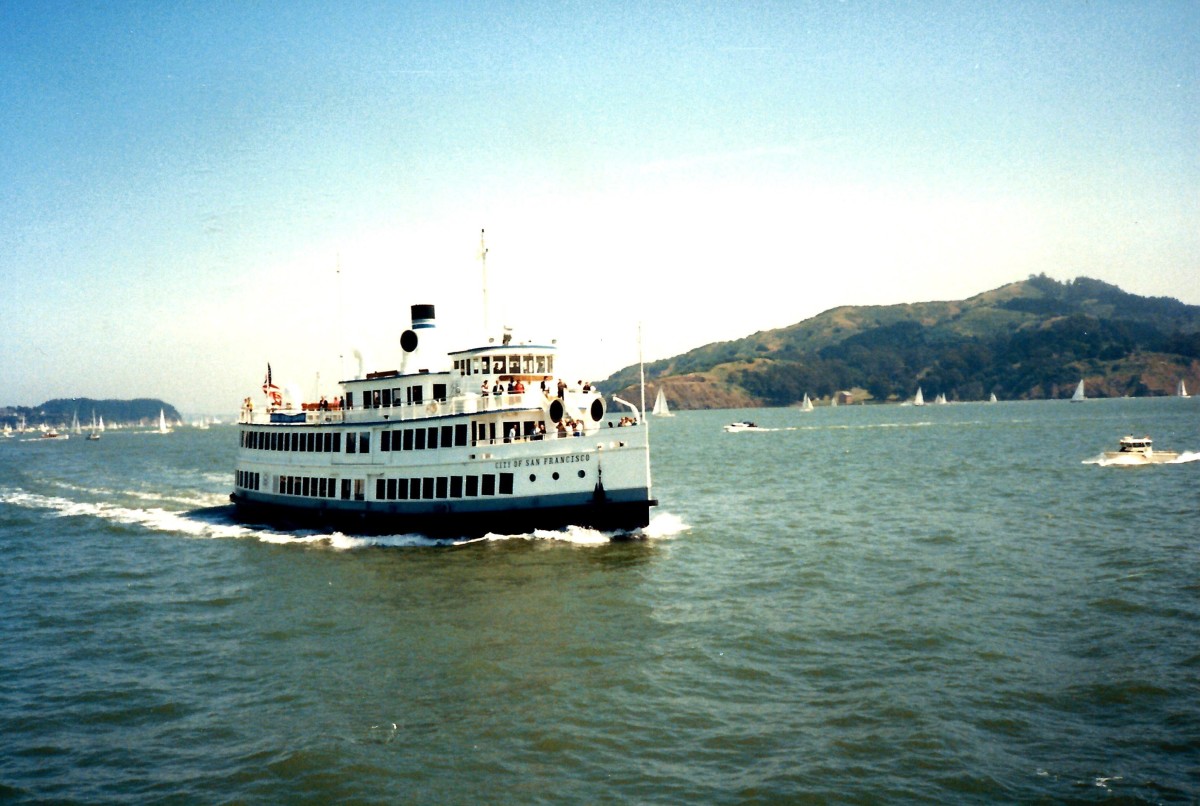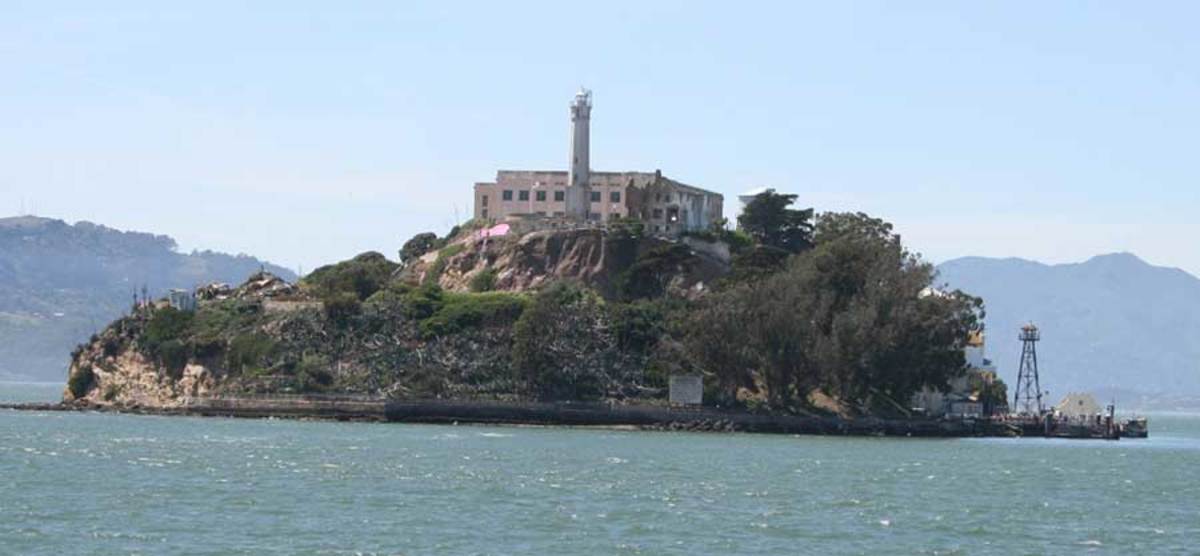- HubPages»
- Travel and Places»
- Visiting North America»
- United States»
- California
History of Alcatraz from Prison to Tourist Attraction

Finding and Naming Alcatraz
The
island was originally named at the end of the eighteenth century, when
explorers from Spain made their way to the San Francisco Bay in order to chart
the as-yet-undiscovered land located there. At the time, one description says
that “the island was totally uninhabited, plagued by barren ground, little
vegetation and surrounding water that churned with swift currents” This
deterred the explorers from closer inspection of the island, but it did not
deter them from leaving their mark on the area with an appellation. Explorer Juan Manuel de Ayala was the
one who named Alcatraz, calling it La Isla de los Alcatraces (which translates
from the Spanish to mean
”Island of the Pelicans”) and later it would be shortened to merely Alcatraz as
time went on.
Alcatraz as Military Fort
Although this initial “discovery” of Alcatraz took place in 1775, it would be nearly another seventy-five years before attention to the area would go beyond just giving it a name and moving on. It was 1847 when the American military began to take notice of the potential that the island held. The island was perfectly situated with a view of San Francisco, giving the military a place where they could guard over the city. Because of the newfound attention to the area due to the gold rush, the military had a vested interest in protecting the area. Topographical engineers were sent out in 1847 to do geological surveys on the potential for turning Alcatraz into a military fortress and construction on that fortress began in 1853.
One of the first things to be constructed by humans on the island of Alcatraz was a lighthouse, which served partially as a watchtower to keep an eye out on impending descent on the area by foreign countries interested in the gold harbored along the west coast. Although serving the practical purpose of protection of the area, the lighthouse also became an important tourist draw to the San Francisco Bay Area because it was the first operating lighthouse to be constructed anywhere along the Pacific Coast.
Of course, the lighthouse was only one part of the development of the military fortress at Alcatraz. Great attention was given to the development of the island in an attempt to make it a symbol of military greatness. However, maintenance of the military armaments on the island required money and time and it wasn’t long before the island of Alcatraz wasn’t serving well as a military fortress. In fact, it was only for a few decades that Alcatraz served as an active military fort.
Alcatraz as a Military Prison
Rather than trying to update the military armaments located on Alcatraz, the government decided that the island might be put to better use as a military prison. The first prisoners to be housed on the island were a small group of Civil War prisoners who were held there in 1861. After the end of the Civil War, the island of Alcatraz fell quiet for over thirty years. However, the Spanish American war changed the relative desolation of the island. In 1898, the prison population on Alcatraz swelled rapidly, going from just twenty six prisoners to over four hundred and fifty. And that was when the island as prison began to really thrive.
In 1906, San Francisco experienced the infamous big earthquake. Alcatraz was not unaffected. Although the quake’s damage did not extend to the island in the bay, the effects were felt there as civilian prisoners housed within city limits were moved over to Alcatraz for safekeeping. The island’s ability to hold the nation’s criminals was noted, and in 1912, the military constructed the large cell house which can still be seen today on the central crest of Alcatraz Island.
By 1920, Alcatraz was filled to capacity with army prisoners. It was the first-ever long-term prison to be built by the army. It was supposed to serve as a threat to potential troublemakers and so was one of the harshest prisons ever created to date. The harshness of the conditions at Alcatraz would become the hallmark of the institution throughout the time that it remained a military prison as well as during the time period after that when it became a federal prison.
In spite of the fact that the prison was appreciated for being a toughened place of punishment for those housed within its confines, the people of San Francisco were not pleased with the fact that this ugly location lay in the middle of their beautiful bay. People just didn’t like this eyesore. The army did what they could to remedy the situation by importing new soil from the surrounding area and building up the landscape a bit with wildflowers.
The people of San Francisco and the tourists drawn to the area may have been impressed with the attention given to the landscape but it added yet another cost to the upkeep of the already expensive island. In 1934, the military determined that the rising operational costs of the prison on Alcatraz had begun to outweigh the benefits of keeping the prison in operation and so closed down the institution. Responsibility for, and control of, the prison at Alcatraz reverted to the Department of Justice and thus began the period of island prison life which ultimately made Alcatraz infamous.
Alcatraz as a Federal Prison
To understand the early days of the development of Alcatraz as a federal prison, one has to have an understanding of the time period during which the prison was initially in operation. In the middle of the 1930’s, social issues were creating large pockets of crime. Prohibition was in action, the Depression was causing problems for everyone and what emerged out of this was a thriving illegal underground which was run by the gangsters frequently depicted in movies about the era. The government faced a two-fold problem; it needed to find something to do with the major criminals who were already wreaking havoc in the nation and it needed to find a way to limit the development of new big crime bosses. Alcatraz was supposed to be a solution to this two-fold problem.
The first thing that the federal government saw fit to do was to re-vamp the image of the prison to make it seem more menacing. Deconstructing all of the work done by the gardeners of the military prison to soften the appearance of the island for the people of San Francisco, the federal government renovated the existing structure to alter the attitude offered by Alcatraz. Under the direction of Robert Burge, the prison was reconstructed to be both outwardly forbidding and reportedly escape-proof. Changes including such things as building more guard towers, creating special gun galleries, installing metal detectors and teargas canisters and replacing the old bars with new tool-proof hardened bars.
Once these changes were made, Alcatraz was ready to get its federal prisoners. Taking in only the worst of the worst from other prisons, Alcatraz soon began to receive inmates from Leavenworth (in Kansas), McNeil Island (in Washington) and the Federal Penitentiary in Atlanta including some of the most notorious names in big crime at the time. This drew national attention to the newly designed prison at Alcatraz.
As a federal prison, Alcatraz was nationally recognized, but it was only in operation for a scant thirty years. As with the military, the federal government eventually found that the upkeep of the prison was just too costly. Combined with negative news attention resulting from the several escape attempts and actual escapes taking place towards the end of the prisons’ life, Alcatraz closed its doors in 1963. The island was abandoned.
Native Americans at Alcatraz
There were a couple of years in the 1960’s and 1970’s when Alcatraz was taken over by Native American activists. Learn more about this interesting piece of Alcatraz history.
Alcatraz as Tourist Attraction
Today Alcatraz is the most popular tourist attraction in San Francisco. People ferry over there by the hundreds each day to tour the grounds of the old prison and to learn all that they can about the interesting history of this landmark set of buildings.









